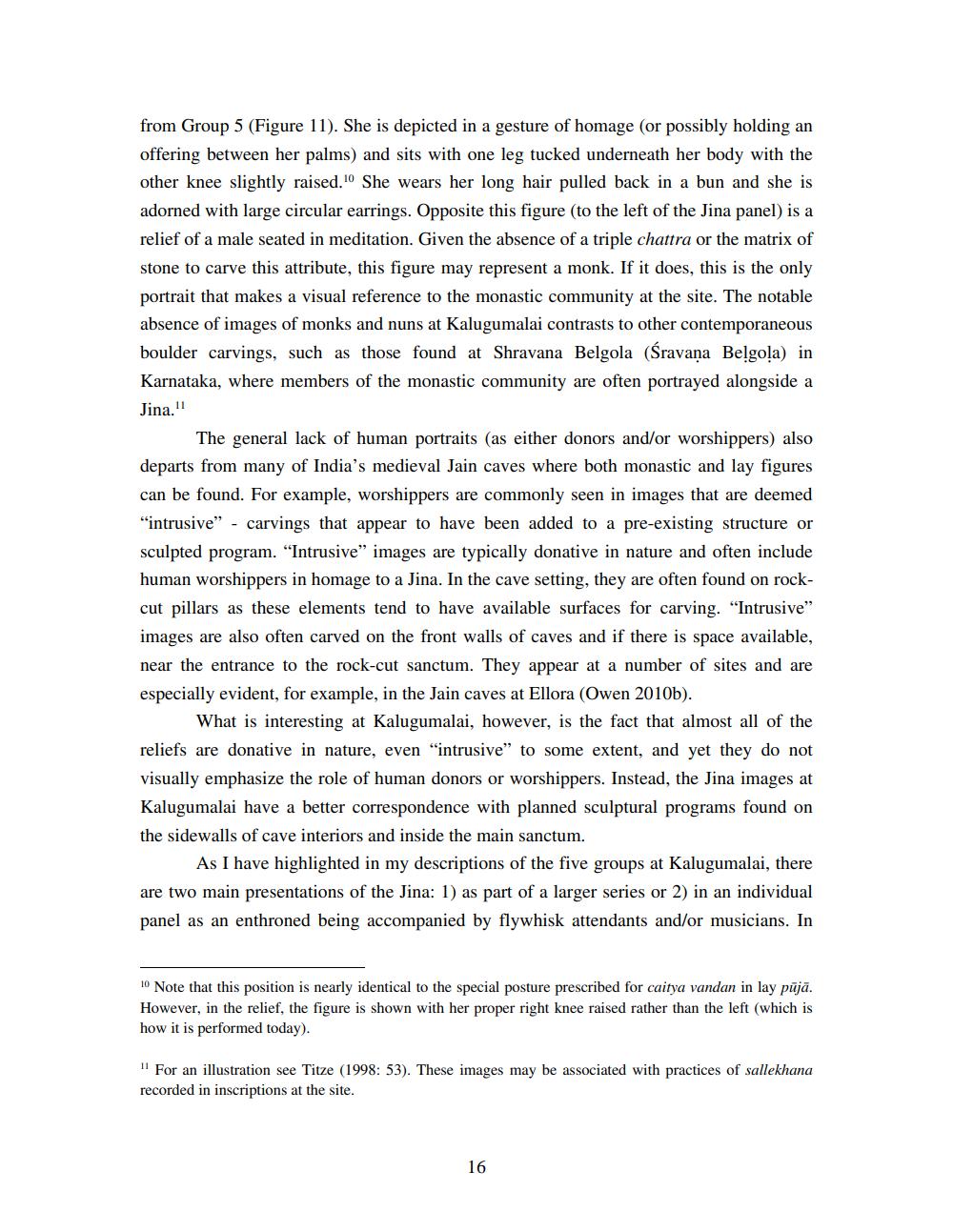________________
from Group 5 (Figure 11). She is depicted in a gesture of homage (or possibly holding an offering between her palms) and sits with one leg tucked underneath her body with the other knee slightly raised. She wears her long hair pulled back in a bun and she is adorned with large circular earrings. Opposite this figure (to the left of the Jina panel) is a relief of a male seated in meditation. Given the absence of a triple chattra or the matrix of stone to carve this attribute, this figure may represent a monk. If it does, this is the only portrait that makes a visual reference to the monastic community at the site. The notable absence of images of monks and nuns at Kalugumalai contrasts to other contemporaneous boulder carvings, such as those found at Shravana Belgola (Śravaņa Belgola) in Karnataka, where members of the monastic community are often portrayed alongside a
Jina."
The general lack of human portraits (as either donors and/or worshippers) also departs from many of India's medieval Jain caves where both monastic and lay figures can be found. For example, worshippers are commonly seen in images that are deemed "intrusive" - carvings that appear to have been added to a pre-existing structure or sculpted program. “Intrusive" images are typically donative in nature and often include human worshippers in homage to a Jina. In the cave setting, they are often found on rockcut pillars as these elements tend to have available surfaces for carving. "Intrusive" images are also often carved on the front walls of caves and if there is space available, near the entrance to the rock-cut sanctum. They appear at a number of sites and are especially evident, for example, in the Jain caves at Ellora (Owen 2010b).
What is interesting at Kalugumalai, however, is the fact that almost all of the reliefs are donative in nature, even "intrusive" to some extent, and yet they do not visually emphasize the role of human donors or worshippers. Instead, the Jina images at Kalugumalai have a better correspondence with planned sculptural programs found on the sidewalls of cave interiors and inside the main sanctum.
As I have highlighted in my descriptions of the five groups at Kalugumalai, there are two main presentations of the Jina: 1) as part of a larger series or 2) in an individual panel as an enthroned being accompanied by flywhisk attendants and/or musicians. In
10 Note that this position is nearly identical to the special posture prescribed for caitya vandan in lay pūjā. However, in the relief, the figure is shown with her proper right knee raised rather than the left (which is how it is performed today).
Il For an illustration see Titze (1998: 53). These images may be associated with practices of sallekhana recorded in inscriptions at the site.
16




